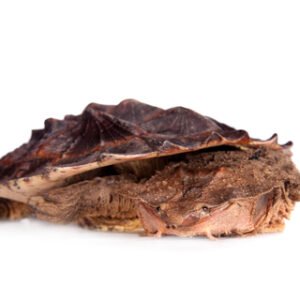Physical Characteristics and Habitat
The three-toed box turtle (Terrapene carolina triunguis) is renowned for its distinct physical attributes and unique adaptations that enable it to thrive in various environments. One of the most notable features of this species is its domed shell, which serves as an effective protective barrier against predators. The shell typically displays a color palette that ranges from brown to olive, often adorned with yellow or orange markings that can vary significantly among individuals. Such coloration not only provides camouflage among leafy forest floors and grassy expanses but also plays a role in thermoregulation.
Size-wise, the three-toed box turtle can vary considerably, usually measuring between 4.5 to 6 inches in shell length, though some individuals may reach up to 7 inches. The most distinguishing characteristic of this turtle is the presence of three toes on each rear foot, which earned it its common name. This adaptation allows for better traction in its natural habitat, contributing to its ability to navigate uneven terrain effectively.
Regarding habitat, three-toed box turtles are predominantly found in the eastern and central regions of the United States. They thrive in diverse environments including woodlands, savannas, and grasslands. These habitats are characterized by a mix of shaded areas and open spaces, providing ample opportunities for foraging while allowing them to regulate their body temperature. The rich leaf litter, abundant vegetation, and moist soil in these areas create an ideal setting for their survival as they forage for a diet that consists of insects, fruits, and various plant materials. Understanding these physical characteristics and habitat preferences is crucial for conservation efforts aimed at protecting this unique turtle species.
Diet, Behavior, and Conservation Status
The three-toed box turtle exhibits a diverse diet that primarily consists of plant materials, insects, and small invertebrates. In the wild, they are known to forage for a variety of foods including berries, fruits, mushrooms, and leafy greens, reflecting the seasonal availability of these resources. During the warmer months, they may consume a higher quantity of high-protein items, such as earthworms and slugs, while in the cooler months, their diet shifts predominantly toward vegetation. This flexibility in feeding habits significantly contributes to their survival in varied environments.
Behaviorally, three-toed box turtles are fascinating creatures. They exhibit unique foraging methods, often using their keen sense of smell to locate food. Their mating rituals are equally intriguing; males will often perform courtship displays that include head bobbing and circling the female. Interactions within their environment are characterized by territoriality and social structures that can vary based on the population density. These turtles are generally solitary, but they may gather in groups during breeding seasons or optimal feeding times.
The conservation status of the three-toed box turtle raises concerns due to various threats they face in their natural habitats. Habitat loss, primarily resulting from urban development and agricultural expansion, poses significant risks to their populations. Additionally, road mortality is a critical threat, particularly as turtles attempt to cross roadways while foraging or migrating. Awareness and proactive conservation efforts are vital to protect these turtles and their habitats. Strategies may include habitat restoration, public education on the dangers of roadways for wildlife, and legislation aimed at preserving their habitats. In conclusion, it is essential to continue supporting conservation initiatives to ensure the survival of the three-toed box turtle in the wild.





